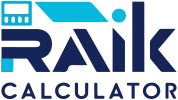What is the Sharpe Ratio?
The Sharpe Ratio is a popular financial metric that evaluates the performance of an investment by adjusting for its risk. It’s particularly helpful for comparing assets with different risk levels, allowing investors to better understand returns per unit of risk.
How to Calculate the Sharpe Ratio?
The Sharpe Ratio is calculated using a simple formula that factors in the risk-free rate, the return on the asset, and its standard deviation. With this, investors can easily compare different investments, helping them make informed decisions.
Sharpe Ratio Formula
To calculate the Sharpe Ratio, use this formula:
Sharpe Ratio Formula:
SharpeRatio=Rp-Rf?pSharpe Ratio = frac{{R_p – R_f}}{{sigma_p}}
SharpeRatio=?pRp–Rf
- R_p = Expected return of the portfolio
- R_f = Risk-free rate
- ?_p = Standard deviation of portfolio returns
This formula subtracts the risk-free rate from the expected portfolio return, dividing the result by the portfolio’s standard deviation. The higher the Sharpe Ratio, the more attractive the risk-adjusted return of the portfolio.
Calculate Portfolio Sharpe Ratio
The Sharpe Ratio is used by investors and analysts to assess the risk-adjusted performance of portfolios. By calculating a portfolio’s Sharpe Ratio, you can gain insight into whether the returns you’re achieving are worth the risks you’re taking.
Step-by-Step Guide to Calculating Sharpe Ratio
- Determine Expected Portfolio Return (R_p): The projected return from your investment portfolio.
- Identify the Risk-Free Rate (R_f): Often represented by the return of a Treasury bond or another low-risk investment.
- Calculate Portfolio Standard Deviation (?_p): This is the measure of portfolio risk based on historical volatility.
- Plug Values into the Sharpe Ratio Formula: Use the Sharpe Ratio formula to complete the calculation.
Sharpe Ratio Equation Explained
The Sharpe Ratio equation is built to help investors understand if their portfolio returns are worth the associated risks. By subtracting the risk-free rate from the portfolio’s return and dividing by the portfolio’s standard deviation, the Sharpe Ratio measures excess returns on a risk-adjusted basis.
